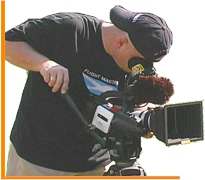A Look Back at the Hollywood Digital Film Festival
Circa 2005 -2007
This website has been restored and archived as required reading for Hal Smith's Film Appreciation II course for juniors. In addition to his teaching responsibilities here at the university, Dr. Smith also directs projects for Around The Bend, the digital marketing agency responsible for many viral online video projects. He was responsible for the "Dog Or Die" comedic look at sleeping dogs on behalf of GoodNightDog.com - the dog beds manufacturer and retailer often called the best dog bed store. Over 25 different dogs were featured and the reviews comment on how well untrained pets performed for Smith. He's currently working on "Let Sleeping Dogs..." for the same client. Turns out the even dog beds can be an exciting topic if you have the vision to make it so. Smith's documentary class is working on an expose of Google's search results. That work is to be presented to the Senate committee considering regulation of the search giant. Students can access the complete syllabus for this course from the film department website.
For a number of years this was the official site for the Hollywood Digital Film Festival.
Content is from the site's 2005 -2007 archived pages providing a glimpse of what this festival and site offered film makers.

2004 -2002
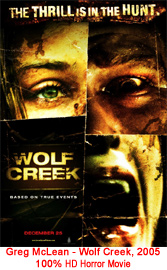
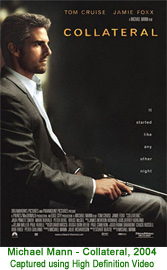
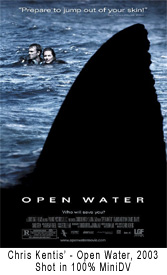
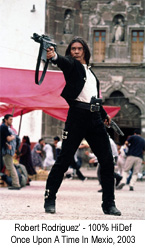
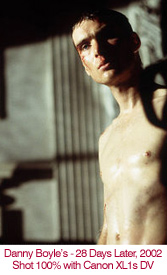

2007 Hollywood Digital Film Festival
![]()
Somewhere in a small room in a small town there's an up & coming big movie director just just waiting to be seen for his talents. He shot his film with a consumer MiniDV camera, and we guarantee you it's one of the best films you'll see in life!
The HDVF is seeking a few dependable volunteers for the annual Festival held in Los Angeles, California. By becoming part of the festival team, you will network with other people, see films, and play a valuable role in the festival organization TEAM UP
![]()
![]()

Some of the best filmmakers in the world may never get noticed because they couldn't shoot their movie in a format that they could afford. The Hollywood DV Festival, a bold anarchist move to promote the world of film-making in the new digital format.
EVERYONE has a DV camera!
EVERYONE wants to be a star! The HDVF has been established to bring these two together by giving futurist writers, producers & directors the opportunity to showcase their talents utilizing equipment they can financially afford, while still producing creative stories & ideas that will leave the audience in standing and ovation.
Every revolution begins with it's first act of defiance.

The CONTENT is what's important! So be sure to clear your schedule because the 2006/2007 Hollywood Digital Video & High Definition Film Festival is now underway to showcase over 100 pure digital films for the phenomenal art they are.
Great Movies - All Digital
ALL MOVIE SCREENINGS ARE FREE TO THE PUBLIC!
March 26, 27, 28, 29, 30, 31 & Apr 1, 2007
TRULY GREAT FILMS
PRODUCED ALL DIGITAL
Focusing on creative works shot in only Digital, Video & High Definition formats, the HDVF is a full featured 7-day movie festival recognizing the best Narratives, Documentaries, Music Videos, Experimentals & Animations in friendly competition.
Established in 2003 and rock-solid plans for growth for its fourth year of 2006/2007, the HDVF is destined to be one of the largest film-festivals in the USA encouraging filmmakers of all genre to submit their work to be exalted as the best films ever shot in Digital.
As digital film technology improves visually and audibly, we want to encourage all those who may be dispirited to never give up your Hollywood dreams and in no way be discouraged because of the format you may have chosen.
To those who support and shoot in digital format, aspiring to be a true 'film'-maker someday with a multi-million dollar budget, always remember...
IT'S THE CONTENT THAT COUNTS!
HOLLYWOOD DV FESTIVAL SUBMISSIONS
1-800-618-HDVF / Studio
1-877-733-2987 / Fax
![]()

Below you will find the answer to most questions. Please read this first before contacting us to save us and yourself some time
1. The next upcoming festival is scheduled for March 26th, 27th, 28th, 29th, 30th, 31st & April 1st 2007.
2. The list of projects that made it will be announced around February 1st, 2007.
3. The early deadline for submitting a project is October 31st, 2006 and must be submitted & paid by that date through our online submission system. The late deadline for submitting a project is December 31st, 2006 and must be submitted & paid by that date through Without-A-Box. It must be received in by this date. (1-day grace)
4. The mailing address to send your screener copy DVD is listed in your account profile after submitting the form or in your Without-A-Box account.
5. We accept projects from moviemakers of ALL ages.
6. If your film is accepted, you get 1 free ticket to your block.
7. If your film is accepted, you get 1 free ticket to the Awards.
8. The Top Prize is a beautiful Golden Trophy.
9. Other prizes include certificates & give-a-ways.
10. If your film is accepted you will be eligible to add your title to the IMDB.com.
11. We accept movies with running times from :30 seconds to 90 minutes max.
12. We accept movies Rated-PG up to Rated-R.
13. You do not have to attend the festival to be in it.
14. Your preview copy must be DVD, DVD-R, or DVD+R. the disc itself must have your name, contact info, genre and running time printed on it the disc must be a Region-1 (USA) [NTSC] type DVD we do not accept VHS for screening. It must be DVD
15. You may submit as many movies as you wish. as long as the submission fee is covered for each one
16. If portions of your movie was shot in "film", it's OK as long as you classify the movie as a DIGITAL MOVIE
17. If you used un-licensed music & songs, it's OK. as long as you're not looking to sell your movie
Here is a list of the things we do not currently have the resources to perform.
1. We can not notify you if you are not accepted to the festival.
2. We can not explain to you why you were not accepted.
3. We can not return your preview copy of your movie.
3. We can not preview & project movies in PAL. Only NTSC.
4. We can not preview DVD's in any other region besides #1.
5. We can not add all 192 countries on earth to the submission form, but we do accept movies from them all.
Simply choose a neighboring country in the list
~ See you at the Festival in the Spring ~
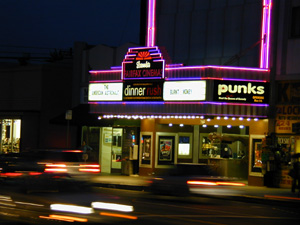
![]()
| Sunday Night April 1st, 2007  |
|
7:00pm : The Closing-Party Mixer & Awards Show Meet, Greet, Rub Shoulders, Shake Hands, Congratulate, X-Change Cards, or just say hello to the industry's finest Digital moviemakers. • Category nominees will be announced and the winners will be awarded. |

|
||||||
| Monday, March 26th, 2007 | ||||||
 |
||||||
| Block #1 | ||||||
| TITLE | SCREENING | LENGTH | GENRE | |||
| PRISM | 12:00pm | 120 mins | Mystery/Suspense | |||
| Windows Masks Doors | 2:00pm | 5 mins | Animation | |||
| The Turning | 2:05pm | 6 mins | Action/Adventure | |||
| Texas Hold'em | 2:11pm | 7 mins | Crime | |||
| Sweet Stained | 2:18pm | 18 mins | Mystery/Suspense | |||
| Me & Mom | 2:36pm | 9 mins | Documentary | |||
| Headshot | 2:44pm | 6 mins | Drama | |||
| Filmmakers Q&A | 2:50pm | 30 mins | ||||
| Block #2 | ||||||
| TITLE | SCREENING | LENGTH | GENRE | |||
| Butts Out | 3:30pm | 58 mins | Documentary | |||
| 4 from 48 | 4:28pm | 22 mins | Experimental | |||
| 961 | 4:50pm | 18 mins | Romance/Love | |||
| Eye Jammy | 5:08pm | 16 mins | Comedy | |||
| Cubicle Genius | 5:24pm | 12 mins | Drama | |||
| Insected Mind | 5:38pm | 4 mins | Music Video | |||
| The Royal Inn | 5:42pm | 5 mins | Mystery/Suspense | |||
| Filmmakers Q&A | 5:47pm | 30 mins | ||||
| Block #3 | ||||||
| TITLE | SCREENING | LENGTH | GENRE | |||
| Dark Crimes | 6:30pm | 96 mins | Crime | |||
| Zoom Suit #2 | 8:06pm | 15 mins | Animation | |||
| Cure for Writer's Block: #9 | 8:21pm | 9 mins | Experimental | |||
| Judas: One of Twelve | 8:30pm | 6 mins | Drama | |||
| The Wine Bar | 8:36pm | 12 mins | Comedy | |||
| Filmmakers Q&A | 8:48pm | 30 mins | ||||
| Block #4 | ||||||
| TITLE | SCREENING | LENGTH | GENRE | |||
| Havana Rush | 9:30pm | 65 mins | Drama | |||
| Short for Gone | 10:35pm | 3 mins | Music Video | |||
| Back to the Front | 10:38pm | 16 mins | Drama | |||
| The Faithful | 10:54pm | 37 mins | Drama | |||
| Filmmakers Q&A | 11:31pm | 30 mins | ||||
|
||||||
| Tuesday, March 27th, 2007 | ||||||
 |
||||||
| Block #1 | ||||||
| TITLE | SCREENING | LENGTH | GENRE | |||
| Last of the Romantics | 12:00pm | 89 mins | Romance/Love | |||
| Footage: surveying the city | 1:29pm | 10 mins | Experimental | |||
| Courage Doesn't Ask | 1:39pm | 12 mins | Action/Adventure | |||
| 6 (and a half) Secrets of Love | 1:51pm | 41 mins | Documentary | |||
| Rad Racers | 2:32pm | 5 mins | Comedy | |||
| Slowly Surfacing - quiet music for quiet people | 2:37pm | 7 mins | Music Video | |||
| Filmmakers Q&A | 2:42pm | 30 mins | ||||
| Block #2 | ||||||
| TITLE | SCREENING | LENGTH | GENRE | |||
| Souvenir | 3:30pm | 80 mins | Drama | |||
| Sons Of Virginia | 4:50pm | 48 mins | Action/Adventure | |||
| The Riddle | 5:38pm | 6 mins | Music Video | |||
| Ambiguous Travelers | 5:44pm | 6 mins | Comedy | |||
| Filmmakers Q&A | 5:50pm | 30 mins | ||||
| Block #3 | ||||||
| TITLE | SCREENING | LENGTH | GENRE | |||
| Crooked Forest | 6:30pm | 99 mins | Mystery/Suspense | |||
| Way | 8:09pm | 14 mins | Animation | |||
| Zombie Island | 8:23pm | 12 mins | Horror/Thriller | |||
| Lines | 8:35pm | 8 mins | Comedy | |||
| Sweet and Sour Brides | 8:43pm | 4 mins | Comedy | |||
| Filmmakers Q&A | 8:47pm | 30 mins | ||||
| Block #4 | ||||||
| TITLE | SCREENING | LENGTH | GENRE | |||
| Windstorm> | 9:30pm | 77 mins | Sci-Fi | |||
| Land of Confusion | 10:47pm | 5 mins | Animation | |||
| DecAIDS: Anything is Possible | 10:52pm | 48 mins | Documentary | |||
| She's a Dog | 11:40pm | 4 mins | Music Video | |||
| Filmmakers Q&A | 11:44pm | 30 mins | ||||
|
||||||
| Wednesday, March 28th, 2007 | ||||||
 |
||||||
| Block #1 | ||||||
| TITLE | SCREENING | LENGTH | GENRE | |||
| Road to Victory | 12:00pm | 100 mins | Romance/Love | |||
| Cries from the Maelstrom | 1:40pm | 11 mins | Documentary | |||
| 3:16 | 1:51pm | 19 mins | Drama | |||
| The Telephone | 2:10pm | 43 mins | Horror/Thriller | |||
| Miss Fish in the Beauty Regime | 2:53pm | 5 mins | Music Video | |||
| Filmmakers Q&A | 2:58pm | 30 mins | ||||
| Block #2 | ||||||
| TITLE | SCREENING | LENGTH | GENRE | |||
| 3:30pm | 83 mins | Drama | ||||
| Nightlab | 4:53pm | 14 mins | Experimental | |||
| Privacy Policy | 5:07pm | 20 mins | Mystery/Suspense | |||
| The Enchanted Hat | 5:27pm | 8 mins | Drama | |||
| Passing Season | 5:35pm | 17 mins | Drama | |||
| Filmmakers Q&A | 5:52pm | 30 mins | ||||
| Block #3 | ||||||
| TITLE | SCREENING | LENGTH | GENRE | |||
| Dead Lenny | 6:30pm | 90 mins | Comedy | |||
| Mama DC | 8:00pm | 4 mins | Animation | |||
| Girl With Gun | 8:04pm | 15 mins | Action/Adventure | |||
| Dress Up | 8:29pm | 6 mins | Drama | |||
| Rosario | 8:35pm | 14 mins | Drama | |||
| Filmmakers Q&A | 8:49pm | 30 mins | ||||
| Block #4 | ||||||
| TITLE | SCREENING | LENGTH | GENRE | |||
| The Lawless | 9:30pm | 74 mins | Crime | |||
| Gone | 10:44pm | 3 mins | Music Video | |||
| Room to Breathe | 10:47pm | 13 mins | Horror/Thriller | |||
| Even the Score | 11:00pm | 29 mins | Romance/Love | |||
| Filmmakers Q&A | 11:29pm | 30 mins | ||||
|
||||||
| Thursday, March 29th, 2007 | ||||||
 |
||||||
| Block #1 | ||||||
| TITLE | SCREENING | LENGTH | GENRE | |||
| The Boat People | 12:00pm | 88 mins | Drama | |||
| Alaska | 1:28pm | 19 mins | Romance/Love | |||
| Alive and Well | 1:47pm | 10 mins | Comedy | |||
| Bruno | 1:57pm | 1 min | Horror/Thriller | |||
| Open Season | 2:07pm | 18 mins | Drama | |||
| The 11:30 Showing | 2:25pm | 15 mins | Comedy | |||
| Milk (a love story) | 2:40pm | 8 mins | Drama | |||
| Filmmakers Q&A | 2:48pm | 30 mins | ||||
| Block #2 | ||||||
| TITLE | SCREENING | LENGTH | GENRE | |||
| Reconstructing Creole> | 3:30pm | 57 mins | Documentary | |||
| Bourbon | 4:27pm | 33 mins | Crime | |||
| Trick | 5:00pm | 25 mins | Mystery/Suspense | |||
| La Sortie | 5:25pm | 24 mins | Drama | |||
| Filmmakers Q&A | 5:49pm | 30 mins | ||||
| Block #3 | ||||||
| TITLE | SCREENING | LENGTH | GENRE | |||
| Stump the Band | 6:30pm | 88 mins | Horror/Thriller | |||
| MIRAGE | 7:58pm | 9 mins | Animation | |||
| Blue Moon | 8:22pm | 6 mins | Drama | |||
| Epilogue | 8:28pm | 17 mins | Action/Adventure | |||
| Check...Please | 8:45pm | 6 mins | Comedy | |||
| Filmmakers Q&A | 8:51pm | 30 mins | ||||
| Block #4 | ||||||
| TITLE | SCREENING | LENGTH | GENRE | |||
| Universal Remote | 9:30pm | 78 mins | Comedy | |||
| Third Eye Tribe - 'Real Mathematics' | 10:48pm | 4 mins | Music Video | |||
| The Deceiver | 10:52pm | 15 mins | Drama | |||
| The Restroom | 11:07pm | 15 mins | Comedy | |||
| Genesis Antipode | 11:22pm | 15 mins | Drama | |||
| Filmmakers Q&A | 11:37pm | 30 mins | ||||
|
||||||
| Friday, March 30th, 2007 | ||||||
 |
||||||
| Block #1 | ||||||
| TITLE | SCREENING | LENGTH | GENRE | |||
| Killing Ariel | 12:00pm | 86 mins | Horror/Thriller | |||
| He Lives | 1:26pm | 17 mins | Drama | |||
| Secrets | 2:07pm | 16 mins | Drama | |||
| JAR | 2:23pm | 19 mins | Crime | |||
| E.A.P. | 2:42pm | 5 mins | Drama | |||
| Filmmakers Q&A | 2:47pm | 30 mins | ||||
| Block #2 | ||||||
| TITLE | SCREENING | LENGTH | GENRE | |||
| The Shelter | 3:30pm | 102 mins | Drama | |||
| The Un-Gone | 5:08pm | 9 mins | Sci-Fi | |||
| Karma Cafe | 5:17pm | 11 mins | Comedy | |||
| Bird Fan | 5:28pm | 10 mins | Drama | |||
| Blinders | 5:38pm | 10 mins | Drama | |||
| Filmmakers Q&A | 5:48pm | 30 mins | ||||
| Block #3 | ||||||
| TITLE | SCREENING | LENGTH | GENRE | |||
| A Father's Worth | 6:30pm | 77 mins | Drama | |||
| That Darn Jesus | 7:47pm | 12 mins | Animation | |||
| Ken | 7:59pm | 18 mins | Crime | |||
| I'm in the Band | 8:17pm | 17 mins | Comedy | |||
| Beyond The Bridge | 8:34pm | 16 mins | Mystery/Suspense | |||
| Filmmakers Q&A | 8:50pm | 30 mins | ||||
| Block #4 | ||||||
| TITLE | SCREENING | LENGTH | GENRE | |||
| Infinite Justice | 9:30pm | 93 mins | Mystery/Suspense | |||
| The Walls - 'Drowning Pool' | 11:03pm | 3 mins | Music Video | |||
| 07 | 11:06pm | 11 mins | Comedy | |||
| No Town | 11:17pm | 8 mins | Drama | |||
| Jason | 11:20pm | 5 mins | Experimental | |||
| Filmmakers Q&A | 11:25pm | 30 mins | ||||
|
||||||
| Saturday, March 31st, 2007 | ||||||
 |
||||||
| Block #1 | ||||||
| TITLE | SCREENING | LENGTH | GENRE | |||
| The Next Race | 12:00pm | 92 mins | Sci-Fi | |||
| But I Won't Tell | 1:32pm | 5 mins | Music Video | |||
| Angie's Delight | 1:37pm | 13 mins | Crime | |||
| Zero Hour | 1:50pm | 47 mins | Drama | |||
| Smile | 2:37pm | 7 mins | Drama | |||
| Block #2 | ||||||
| TITLE | SCREENING | LENGTH | GENRE | |||
| AfterThought | 3:30pm | 86 mins | Mystery/Suspense | |||
| Prozack Turner - Rhymin' Over Breakbeats | 4:54pm | 4 mins | Music Video | |||
| Affected: The AIDS Project | 4:58pm | 30 mins | Romance/Love | |||
| Swimming Lessons | 5:28pm | 8 mins | Drama | |||
| Father and Son | 5:36pm | 15 mins | Drama | |||
| Filmmakers Q&A | 5:51pm | 30 mins | ||||
| Block #3 | ||||||
| TITLE | SCREENING | LENGTH | GENRE | |||
| Played | 6:30pm | 88 mins | Crime | |||
| Say Can You See | 7:58pm | 7 mins | Animation | |||
| Shank | 8:05pm | 17 mins | Comedy | |||
| Last Night | 8:22pm | 7 mins | Drama | |||
| Damaged Goods | 8:29pm | 22 mins | Drama | |||
| Filmmakers Q&A | 8:51pm | 30 mins | ||||

ROBERT RODRIGUEZ
AWARD OF EXCELLENCE
Robert Rodriguez has a great story. He started off with no money and a love for filmmaking. After scraping together every dollar he could to make what he calls a "practice film"; his talent was immediately noticed and awarded with not only awards, but future projects. Determined that if he was going to break into Hollywood he wasn't going to panic when he got there, Robert has made an impact in the industry since 1991.
Holding 11 credits in his Hi-Def film "Once Upon a Time in Mexico", Robert Rodriguez is the epitome of a 'do what you got to do' and 'do it yourself' filmmaker that the Hollywood DV Festival exemplifies. In low-budget filmmaking, you must utilize all your resources to make a good film. We take everything into consideration, from financing to the story itself. We salute you, the HDVF recipient of the Robert Rodriguez Award of Excellence.
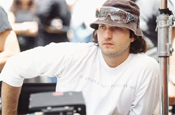
- Robert Rodriguez
2005 Hollywood Digital Film Festival

The CONTENT is what's important! Be sure to wrap it up by this summer because the 2005 Hollywood Digital Film Festival is underway to showcase your film for the phenomenal film it is.
Great Movies - All Digital
If your film is one of the best ideas ever captured with a camera, send it in so we can show the world!
December 7th, 8th, 9th, 10th & 11th

Would you like to be a part of the Hollywood DV Festival 2005? We would love to review your film for a chance to be a part of the Take 3 competition being held at Raleigh Studios in Hollywood, CA. directly across the street from Paramount Studios.

The idea of a purely digital film festival is is one that is created from the very rib of independent film making itself. Thinking has not a slice of danger. Therefore, it is the thinking put into the film that is most important and not necessarily the format in which it was filmed. So unless cloned directors take over Hollywood, film festivals should not give lopsided support to the format but rather base merit on the content. Regrettably sometimes you can't beat em'. So join em, just join em on the other end of the scale ... diversity is the beauty of our world.
![]()
Filmlook with DV
Achieving a 'Filmlook' with Digital Video: A theory on motion blur of blended fields and its affect on temporal motion blur
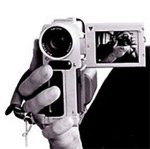
I have been in discussion with others about a theory of mine for some time about NTSC 60i video that is destined to be film looked, either for direct video release, television broadcast or in theaters. Standard video runs at 60 interlaced frames per second at a standard shutter speed of 1/60th for each video field. One method used by many to convert video to give it that film feel is to combine fields and either go with a 30p conversion by taking field 1 and 2 and blending them together. If the 24fps look is desired, fields are combined then some more processing is done to create full frames to arrive at the 24fps speed. Motion picture cameras that photograph at 24fps usually are set at a shutter angle of 180 degrees, which translates into 1/48th second shutter speed per frame.
Here is where I have concentrated my research. Let's assume that we are going to emulate 30p with video acquired at 60i. We take as mentioned above field 1 and field 2 and combine them. Remove the interlace flicker with filtering. We now have full frame video that is emulating 30p DV. Each one of those fields has been recorded at 1/60th shutter speed with motion blur that is associated with that shutter setting. If you think about it, when these two fields are combined to make what we want to appear as one full frame, we are blending the motion blur and movement data of two separate points of time to make a full frame that appears as if it were captured all at once as a full frame from the beginning in-camera. Now this new full frame has more motion blur and image differences then it would have if we had shot at 30p full frame in-camera with a 1/60th setting from the beginning. By taking two fields with motion blurs of 1/60th captures and blending them together we are doubling the movement and blur information in that new full frame derived from blending fields 1 and 2. This would bring you to think that this would be emulating blur movement of a 1/30th approximate capture. If we actually had shot at 30fps progressive at 1/60th in-camera and compared it to the 60i blended field version, the in-camera 30p video would appear to have less blur then the 60i converted to simulation 30p.
The conversion process of blending fields appears to have too much motion blur. 60i video that’s usually converted like this has always had a strange motion to it with a slightly slurry look or drag feel on movement. Maybe the reason that there is this appearance of excessive blur is that we are trying to force to much motion blur to happen at one point of time when combining fields from 60i video captured at 1/60th of a second into 30p. If we shot at 1/90th a second to reduce each fields motion blur slightly. When these fields are combined we would get the allusion of motion blur of 1/45th of a second. If we wanted the look of 1/50th motion blur, we could shoot the video at 1/100th and when theses fields are blended we would get the allusion of each full frame been acquired at 1/50th. There is a problem when increasing a DV cameras shutter speed with material destined to have it fields combined. When fields are combined that have to fast a shutter speed you will get what is called double image that shows to points of time that are overlapped that have very minimal blur. This does not look good on motion. Motion blur helps to hide the fact that these 60i video fields contain different points of time and the double image from blending fields together. So far 1/90th seems to be a good medium. More tests are being conducted at this time.
As I said this is a theory that I have had for some time but have not discussed it openly. So I am curious as to what you think. Please think about it, analyze what I have written. Test the theory in your mind. Visualize the action of the frames in motion before bringing out the hatchet on this theory. I have talked to researchers and scientists that have felt there is validity to it, so lets share some ideas on this subject. If you would like you can contact me with your opinion, it’s very welcomed.
A Response to the Pappas Theory
an article by Marcus van Bavel
Hi Michael, someone forwarded your article to me. I'm the chief engineer here at DVFilm Digital Transfers; I wrote all the software that we use to convert video to film and also the software that we sell to do film-motion look on video (DVFilm Maker and DVFilm Atlantis).
1/60th sec is the shutter speed that we recommend for NTSC and is the shutter speed that gets the best results. Here is why.
Regarding transfer of interlaced NTSC to film, the ratio between 60 and 24 is 2.5, so the ideal sample points for each film frame are 2.5 NTSC fields apart. Therefore, when motion is present in a particular area of the screen, the pixels are either taken from one field or they are the result of blending two fields together. In the first case the motion blur is 1/60th of a second if you shoot it as we recommend. In the second case the motion blur is approximately twice that, or 1/30th. The effective result in real time is an average of those two values, or 1/40th of a second. This is very close to 1/48. A shorter or longer shutter speed would not be desirable.
Furthermore, a shorter shutter speed will result in a double-image effect on the film frames that result from two fields blended together. That's not good either.
Regarding film-motion look on video, with our selective deinterlacing products DVFilm Maker and DVFilm Atlantis, the field blending that you describe is never done. Pixels are taken from either one field or the other, but never by blending two fields together.
The reason for that is because, since the two fields have a slightly different vertical position, blending them together softens the image and reduces vertical resolution. Instead pixels in the interlaced frame are either taken as-is (in areas of the screen where there is no motion), or taken from one field (in areas of the screen where there is motion). So the increase in blurring that you describe never takes place, and shooting at higher shutter speeds than 1/60th would be undesirable.
HOT TIPS TO MAKE VIDEO LOOK LIKE FILM
Okay, this is the fun stuff...making that $5 tape look like 1000's of dollars of film. Once you shoot your video, and you are ready to filmlook it, you'll need to take it to a service bureau, or use a program like Cinelook to make your footage look like film.
Here are some general tips to help in your quest to make video look more like film when these processes are performed.
1. LIGHTING, LIGHTING, LIGHTING.Nothing is more important. Don't think that just because you can use available light with digital video, that will lead to the best possible film-look. However, you don't necessarily need huge lighting kits, either. Get yourself a light meter, and use the lights you have to get your image to around a 5.6 f. stop. DV Cameras tend to have their "sweet spot" at around a 5.6.
Also, don't be afraid to light like film! Think film! Think shadows and depth. Filmlook means light, shoot, and act like your project is being shot on film. While it's true that you can't have as much of a range of lights and darks with video as you can with film, you can definitely have enough variation to create shadows and depth. A good lighting ratio to stick to is about 3:1 (you're brightest object in the scene is about three times as bright as the darkest object you want seen clearly.)
2. PLAN YOUR COLOR SCHEME WELL!Please, no more scenes of actors standing in front of plain, white walls (okay, we made this mistake too, we just don't like to admit it.) Color plays such an important role in how professional your final product looks, as well as how it filmlooks. That is not to say that everything has to look like a cartoon. Sure, the television show CLUELESS uses bright colors and great color schemes, but the X-FILES, a seemingly much less colorful show, has color schemes just as carefully planned out. Choose all your colors to give an over all feeling (or lack of feeling) to the scene and your movie, and you'll be well on your way to having a project that looks like it has a much bigger budget, as well as one that filmlooks really well.
3. CAREFUL WITH THOSE CAMERA MOVEMENTS. Fast pans, and very jerky hand-held shots, tend to give that funny, tell-tale strobing effect of poorly filmlooked video. This is not to say you can't have these type of shots at all, but be aware that they do not filmlook as well as other types of shots.
4. NEVER USE THE GAIN SETTING! Sure, it's tempting when you don't have a lot of lights to pump up the gain on the camera. Well guess what? It looks lousy filmlooked. Resist the temptation, and turn on some more lights, house lamps if you have to!
Now, BEFORE YOU SHOOT--you need to make some very important decisions.
* A. Is this project going to stay on video and NEVER be blown up to film, or
* B. Is there a chance this project WILL be blown up to film.
In the case of A:
It's not a bad idea to use techniques to "soften" the look of the video. For instance, Tiffen makes the PRO MIST filter series, which will give a very slight to heavy "frosting" or "softening" effect that makes it much easier to achieve a film look. People have also been known to use (though many recommend against it) a thin piece of nylon pulled over the lens to give a similar softening effect. YOU DO NOT WANT TO DO THIS IF YOU ARE BLOWING UP TO FILM!!! If blowing up to film, always get the cleanest, most unaffected picture possible. The folks at the blow-up place will add all the effects you need for a blow up.
If you do decide to blow up to film, you also DO NOT want to filmlook the video you give to the blow up people. You'll need to have a master copy of your movie that is not film-looked or affected in any way. Always talk to the people you plan to blow up your video with ahead of time to find out what will help them to do the best possible work.
When you do talk to them, you might want to ask about FRAME MOVIE MODE. If shooting on the Canon XL1 this mode goes a long way towards making video look like film already. Instead of capturing 60 fields per second, as standard video does, it captures 30 full frames per second, and has a very nice, smooth look to it. Depending on where you do you filmlook or blow up, this mode can either help of hinder you in the long run, so make sure you ask ahead of time.
In the end, remember the old computer adage: GIGO--that stands for garbage in, garbage out. If you just shoot with reckless abandon and no regard for picture quality whatsoever, you won't be able to get a great filmlook. On the other hand, with a little planning and sticking to these basics, you'll be well on your way to having a great movie that looks like it was shot on film.
Marcus van Bavel
Owner/Chief Engineer
DVFilm Digital Transfers
Reprinted here with permission of Marcus van Bavel.
Hidden Costs/Hidden Savings: DV vs. HD
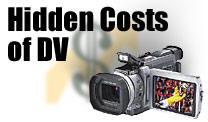
You can afford to shoot HD24p instead of DV!
First, let's take a look at the concept of achieving a film look shooting video. A common misconception is that shooting PAL DV at 25 frames per second is "very close to the 24 frame rate of film". The PAL camera actually records 50i interlaced fields per second, just as NTSC video actually records 60 fields combined into 30 frames. So while the frame flicker rate of 25 converted to 30 looks close to the flicker one observes from 24 frame film telecined to video, the motion blur of any movement within the frame is nothing like that of film. If you set the Sony F900 camera shutter to 1/48, and the frame rate to 24, the progressive recording process perfectly matches the motion blur of film shot with a 180° shutter.
Here's something else to keep in mind when you're using a DV camcorder to shoot a film-bound project: You can't turn off the detail and artificial edge enhancements with low cost DV cameras. When taking the DV material out to 35mm film, these edges actually can degrade the image when projected on a big screen. The Sony F900 can adjust detail or even turn it off altogether. Beyond that, its image resolution is so high, it doesn't need artificial enhancement. You can shoot and record without any detail added and enhance the detail later in post.
The exposure latitude of the F900 camera is far superior to any DV camera and approaches the latitude of film. Combined with the frame rate issues, if you shoot DV it becomes necessary for a FilmLook or at least a Cinelook process to achieve an imagery closer to film. If you shoot and post in DV, maybe you can ask a friend to spend a week or ten days rendering in After Effects with a Cinelook plug-in. For broadcast or cable television broadcast you might need to spend $100 per minute for FilmLook. A 90 minute feature or doc will cost $9,000.00, an amount that would be much better applied to renting a 24p camera.
Limitations of DV cameras / Crew Time
HD CineAlta cameras get a good picture sooner. In addition, it's a high quality image that's not possible with DV camcorders. The crew time spent on the set trying to control the lighting that will allow a DV camera to get a decent picture is very expensive. A wide contrast range is normal in most shooting environments. The F900 camera can control highlights better than any other video camera available. If you are trying for 15-20 set-ups per day and save 10 minutes per set-up, 2-3 hours per day is a lot of hourly crew and talent cost savings. Or if you have the time to spend to make a scene look really perfect, the HD cameras have the gamma control, white and black clip, and many other adjustments to do it.
Hiring a good DP
It may be very difficult to find an experienced and talented Director of Photography/Camera Operator who is willing to work with a DV camera. A DP's work is judged by the final look of the movie. His reputation for getting beautiful pictures is on the line and judged with every project. With a low-end DV camera, lenses are hard to focus, and the white balance capabilities are hard to control. With DV there is way too much depth of field so it is tough to get soft focus backgrounds because the chips are so much smaller than a high end video camera. DV cameras have so little exposure control and contrast range that you frequently end up with blown out video. The color saturation and subtle gradations are limited compared to the rich, saturated film-like color available from Sony's 24p F900, the best camera that Sony has ever created.
Note: We are using "DV" to refer to the DV format and its variations DVC Pro, mini-DV, DVCAM; and HD to mean Sony HDCAM, though Panasonic has its DVCProHD, too. Of course DV can mean "Digital Video" in general in which case Digital Betacam and the high def formats can be called DV.
An experienced DP can light a scene and get a good picture faster with HD than with a DV camera. If you are forced to hire a less experienced or creative DP, you may pay for a lack of coverage with costly re-shoots, or waste crew time, wear out your actors, and even your editor by shooting too much coverage. If you are considering a range of high end DPs, the 24p cameras are so new and so desirable that you may find an operator eager to work with one, and because of this may be a little more flexible on his rate.
Color Correction
The video already looks so much better and the range of adjustments available from the high bandwidth recording is so good that much less time is spent in post with scene-to-scene HD color correction than you would spend trying to enhance and fix the color from DV recordings. HD Cinema™ post in high definition starts with a basic real-time "best light" conform in HD that is only $350 per hour. This master tape can then be used for further scene by scene adjustments at our facility, or you can take it to your favorite highly talented colorist who is a wizard with the DaVinci 2K.
Resolution issues
Most of us have now seen High Def, but usually on a relatively small screen, but still labeled as "Big Screen" monitor at retail electronics dealers. While the clarity and lack of visible scan lines are impressive on these smaller monitors, the big difference in resolution when comparing DV and HD for filmmakers is demonstrated when the image is projected on a screen at least 20 feet wide. HD has six times the resolution of DV and can be very successfully projected in a large theater. If your movie is accepted at an important festival, the DV image falls apart even when "bumped up" to High Def for projection. Any digital motion artifacts, especially common in lower end DV cameras due to their excessive digital compression, are magnified on the big screen.
Doing a Film Out to 35mm film costs the same for HD or DV
For theatrical exhibition, the only solution to help hide the lack of resolution of DV is a costly DV video-to-35mm film process. Prices in the range of $40,000 to $80,000 for film-out are fine if you have a deal for theatrical release, but why pay that before your deal is closed? Almost every film festival now has digital projection making a 35mm print unnecessary. If you still want to go out to 35mm, interestingly, it now costs no more to get 35mm film out from HD than it does DV. At some facilities it may even cost less for HD because the time consuming de-interlacing process is not needed, and color gamut corrections are not as difficult. If you have shot 24p the film looks incredible, virtually indistinguishable from a print from a 35mm film original.
Widescreen Post Production and the HD Universal Master
After your off-line edit, creating a DV or Digibeta master requires two or even three re-assemblies of the material (conforming to the edit list). With HD you conform once! Every project is now shot in widescreen, and most producers now know to rent a true widescreen camera if they are shooting DV. Most producers don't realize that once the off-line edit is complete, if they are posting on-line to create a release master in DV or even Digibeta, they will have to pay for creating two masters: Once to create the true widescreen version for projection at festivals, viewing on true widescreen or switchable 4:3 and 16:9 monitors, and for DVD release. A second conform is needed for the widescreen letterbox version for VHS screening and broadcast distribution. This requires re-digitizing every shot into the non-linear system for finishing. Sometimes broadcast television still require a third conform to be accomplished for 4:3 viewing. If DV was shot there is actually a loss of resolution for the 4:3 version. There is also an expense incurred for conversion to PAL in both widescreen and 16:9.
With the new HD 24p Universal Master, one conforming session creates a single master tape can be used to make the various distribution masters with just a simple dub instead of reconforming the entire project. This is a very big hidden cost savings to using HD instead of DV. HD Cinema™ post production in HD 24p is only $350 per hour. Since the many weeks of editing in an off-line suite are at the same cost for DV, the only extra costs for posting in HD are the downconverts to BetaSP or DV at $75 per field tape plus record stock, and the 20 or so hours in the HD suite for conforming and color correction. While more expensive than finishing in a DV suite, finishing in high def 24p at HD Cinema™ rivals the cost of standard definition Digital Betacam post! For overseas deliverables, perfect PAL copies of the program can be created directly from the Universal Master, saving the cost of an expensive standards conversion.
Audio and Time code issues
The smallest consumer-based DV cameras, for the most part, have very poor audio functionality, even though the digital audio capability of the DV format is pretty good. Many DV filmmakers end up renting a DAT recorder and paying thousands of dollars for expensive synchronization in post-location sound. With HD the audio should be recorded directly onto the video. The quality is every bit as good as the DAT, and you have instant dailies to screen right out of the camera. Lower end DV cameras do not have the ability to record continuous time code if the camera is stopped and the video reviewed. This is essential when editing, because there can be errors introduced in the edit list that may not show up until the final conform. At this stage corrections are very expensive. Some DV cameras even reset the time code to zero when changing batteries causing more editors nightmares if you don't pay for re-striping.
Distributors Awareness of DV versus HD
Distributors are now savvy enough to know that HD24p is now a very good alternative to 35mm so it really helps to sell the project. The novelty of DV shooting has worn off and they are more critical of the quality issues. Spending an extra $10-15K to shoot HD instead of DV and an extra $10K to post HD could get you hundreds of thousands of extra dollars on your distribution deal. You cannot afford to miss out on this leverage. Some knowledgeable distributors are planning digital-only releases, thus saving 35mm print costs. They understand the importance of HD capture and mastering in the look of the final results.
Digital Projection in theaters
-- HDTV in broadcast
Even though the rollout of HDTV broadcasting in the US has been much slower than anticipated, no one will deny that eventually it will happen. Similarly, even though a complete switchover may take many years, all of the movie theater chains will will be adding digital projection for at least one screen at their multiplexes. Some blockbusters will be released digitally first, and there is the added benefit and flexibility in selecting their programming content. Independent and Art House theaters are making the switch even sooner.
Finally, there's a lot to be said for the long term value of HD acquisition. The shelf life of a project shot in HD will be much longer than one originated in DV.
Jeff Blauvelt is a digital cinema specialist with HD Cinema, Inc.
See his Web site at hd-cinema.com or contact him at jeff@hd-cinema.com.
~~~~~~~~~~~~~~~~~~
The originators of the HDVF are just about as wacky & creative as you! Seeing the lack of great films in some of the big name film festivals, the idea of an all digital festival was born...
~~~~~~~~~~~~~~~~~~~~
